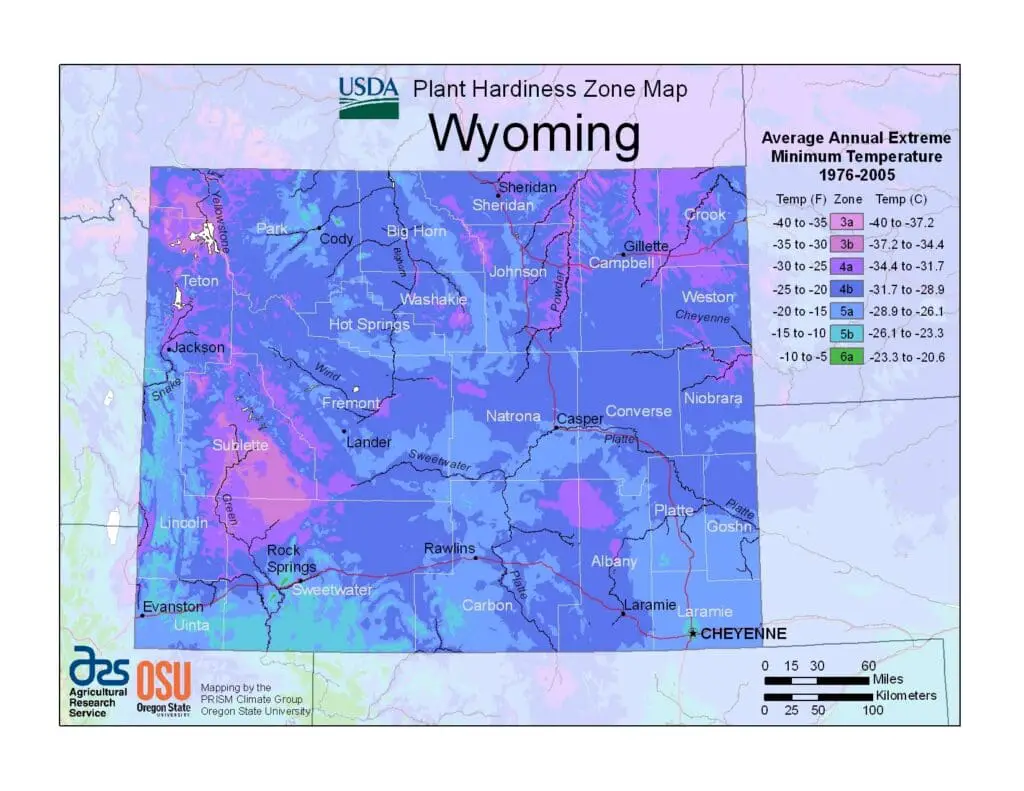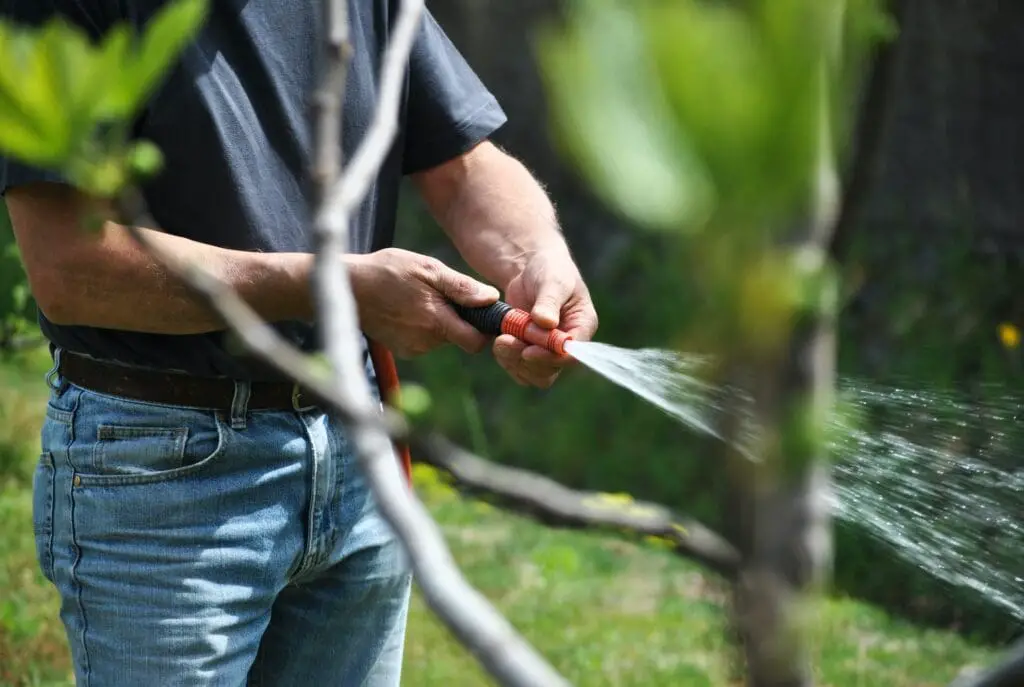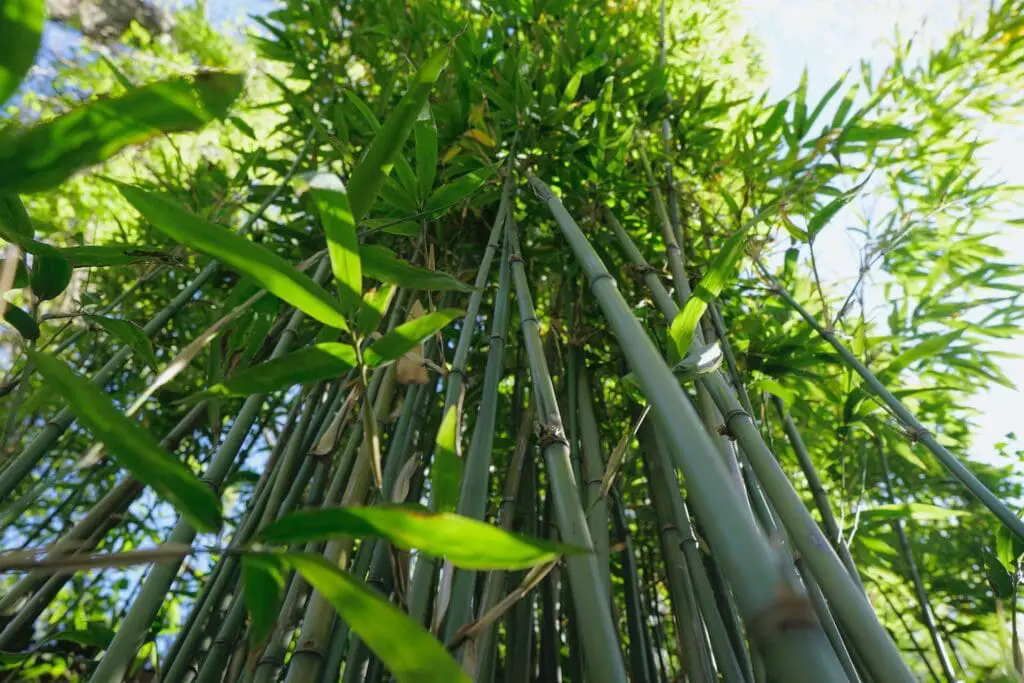Growing Bamboo In Wyoming
Bamboo cultivation in Wyoming presents unique challenges due to the state’s harsh climate. However, with careful selection of cold-hardy varieties and proper care, it is possible to grow bamboo successfully in this region.
This article aims to provide a comprehensive guide on growing bamboo in Wyoming, offering insights into ideal growing conditions, soil preparation, planting techniques, watering and fertilizing methods, spread control measures, as well as pruning and maintenance practices.
Key Takeaways
- Phyllostachys aurea (Golden Bamboo), Phyllostachys nigra (Black Bamboo), Fargesia robusta (Clumping Bamboo), Phyllostachys bambusoides (Giant Timber Bamboo), and Phyllostachys aureosulcata (Yellow Groove Bamboo) are bamboo species that can be cultivated in Wyoming.
- Phyllostachys aurea is a cold-hardy species that can adapt well to Wyoming’s climate.
- Fargesia robusta is non-invasive and can tolerate Wyoming’s cold winters better than other varieties.
- Choosing the right location with partial shade and well-drained soil is crucial for growing bamboo in Wyoming.
What bamboo can grow in Wyoming?
Several cold-hardy bamboo species, such as Phyllostachys aurea, Phyllostachys nigra, Fargesia robusta, Phyllostachys bambusoides, and Phyllostachys aureosulcata, have proven to be suitable for cultivation in Wyoming due to their adaptability to the state’s climate. These varieties are known for their ability to tolerate snowy winters and freezing temperatures.

Among them, Phyllostachys aurea is a particularly cold-hardy species that can thrive in Wyoming’s climate.
Fargesia robusta stands out as a non-invasive option that can handle Wyoming’s cold winters better than other varieties. However, it requires well-drained soil and protection from strong winds.
While Phyllostachys bambusoides adds a dramatic presence, it does not handle frequent temperatures below 5ºF well.
On the other hand, Phyllostachys aureosulcata is a versatile variety that can adapt well to Wyoming’s climate conditions.
Therefore, these bamboo species offer excellent options for growing bamboo in Wyoming while adapting them according to the specific requirements of each variety.
Soil Preparation
An essential step in preparing the ground for cultivating bamboo involves thorough soil preparation to ensure optimal growing conditions.
Testing soil pH is crucial to determine the acidity or alkalinity of the soil, as bamboo prefers slightly acidic to neutral pH levels ranging from 5.5 to 7.0.
Removing weeds and rocks from the planting area is necessary to eliminate competition and create a clean environment for healthy growth.
Additionally, improving fertility and drainage is vital for successful bamboo cultivation. Adding organic matter such as compost or well-rotted manure can enhance soil fertility, while incorporating materials like sand or gravel can improve drainage in heavy clay soils.
By addressing these aspects during soil preparation, growers can create an ideal foundation for their bamboo plants, promoting vigorous growth and overall plant health.
Planting and watering
During the planting process, it is crucial to ensure that the bamboo rhizomes are positioned at the proper depth in the hole to promote healthy root development and establish a strong foundation for growth.



Here are some key points to consider when planting and watering bamboo:
-
Proper watering techniques: After planting, water the bamboo thoroughly to settle the soil and eliminate air pockets around the roots. Provide consistent moisture by watering deeply once or twice a week, depending on weather conditions.
-
Common watering mistakes: Avoid overwatering, as it can lead to root rot. It is important to strike a balance between keeping the soil moist and preventing waterlogged conditions.
-
Watering schedule for bamboo: Adjust your watering schedule based on factors such as rainfall, temperature, and humidity levels. Monitor soil moisture regularly and adjust accordingly.
Mulching and fertilizing
Mulching and fertilizing are essential practices for promoting healthy growth and providing necessary nutrients to bamboo plants.
Mulching offers several advantages, including moisture retention, weed suppression, and temperature regulation. Applying a layer of organic material, such as wood chips or straw, around the base of the bamboo can help retain moisture in the soil and prevent weed competition. Additionally, mulch acts as insulation during extreme temperatures, protecting the roots from winter cold and summer heat.
When it comes to fertilizing bamboo, a balanced fertilizer should be applied in spring and early summer to provide essential nutrients like nitrogen, phosphorus, and potassium. This helps support vigorous growth and overall plant health. It is important to follow recommended application rates to avoid over-fertilization which can lead to excessive foliage growth but weaker culms.
By implementing proper mulching techniques and regular fertilization, bamboo enthusiasts can ensure optimal growth conditions for their plants.
Controlling spread
Controlling the spread of bamboo is a crucial aspect of cultivation, ensuring that it does not become invasive or encroach on neighboring areas.
To prevent rhizome spread and contain bamboo growth, several methods can be employed. One effective method is the use of physical barriers such as root barriers or plastic edging installed vertically into the ground around the bamboo planting area. These barriers should extend at least 24 inches below the soil surface to prevent rhizomes from escaping.
Regular inspection and trimming of rhizomes that may be creeping beyond the designated area are also essential in controlling spread.
It is important to note that containment measures should be implemented early on in bamboo cultivation to avoid extensive spreading and potential damage to surrounding plants or structures.
Pruning and maintenance
Pruning and maintenance of bamboo plants are essential for promoting healthy growth and creating an aesthetically pleasing landscape. When it comes to pruning bamboo, timing and technique are crucial.
It is recommended to prune during the late winter or early spring before new shoot growth begins. This allows for easier access to the culms and reduces the risk of damaging new shoots. Pruning techniques involve removing dead or damaged culms, maintaining air circulation by thinning out crowded areas, and removing any weak or diseased foliage.
Regular inspection and trimming of rhizomes are also important for controlling the spread of running bamboo varieties.
Common maintenance issues with bamboo include pest infestations, such as aphids or mites, which can be controlled through organic insecticides or horticultural oils. Additionally, providing consistent moisture without overwatering is crucial to prevent root rot. Applying a layer of organic mulch around the base of bamboo plants helps retain moisture, suppress weed growth, and provide extra protection against cold temperatures.
The benefits of regular inspection and trimming cannot be overstated. By regularly inspecting your bamboo plants, you can identify any issues early on and take appropriate action to prevent further damage. Trimming excess rhizomes not only controls spread but also helps redirect energy towards new shoot growth instead of underground expansion.
Cold-hardy bamboo species
Cold-hardy bamboo species, such as Phyllostachys aurea and Fargesia robusta, can withstand the harsh winter conditions of Wyoming while adding a touch of natural beauty to the landscape. These varieties have proven to be well-suited for Wyoming’s bamboo climate due to their ability to tolerate freezing temperatures and snowfall.
Here are four of the best bamboo species for Wyoming winters:
-
Phyllostachys aurea (Golden Bamboo): A cold-hardy variety that adapts well to Wyoming’s climate.
-
Fargesia robusta (Clumping Bamboo): Non-invasive and better suited for cold winters compared to other varieties.
-
Phyllostachys nigra (Black Bamboo): Requires well-drained soil and protection from strong winds.
-
Phyllostachys bambusoides (Giant Timber Bamboo): Adds a dramatic presence but may not handle frequent temperatures below 5º F well.
By selecting these cold-hardy bamboo varieties, gardeners in Wyoming can enjoy the beauty of bamboo without worrying about winter damage.
Conclusion
In conclusion, growing bamboo in Wyoming is possible with the selection of cold-hardy varieties and proper care.
Phyllostachys aurea, Phyllostachys nigra, Fargesia robusta, Phyllostachys bambusoides, and Phyllostachys aureosulcata are some suitable species for Wyoming’s climate.

